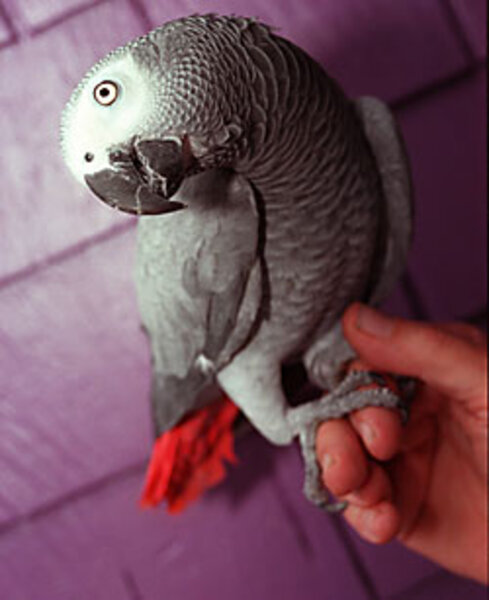For kids: Return to the great outdoors
Loading...
A long time ago, the kinds of animals we now have as pets were once untamed creatures.
But did you know that some pets have gone back to the wild?
These once-domesticated animals escaped from their homes or were let go by their owners. Some of them formed packs or flocks and had babies that never lived in captivity. This is how they became wild animals again.
Here are some of their stories:
Snakes on vacation
If you were in Florida and saw a Burmese python slither by, the first thing you might think is, "Help, a snake!"
But you should also be surprised because Burmese pythons aren't American snakes; they're native to Asia. So what are they doing in Florida?
Well, people probably bought these snakes as pets when they were cute, little babies. When they grow into 15-foot-long eating machines, though, owners have sometimes set them free in the Everglades, a wetlands area in the southern part of the Sunshine State.
The Burmese python, which can weigh up to 250 pounds, swallows its prey whole in one gulp and can strangle an alligator, but not if the alligator eats the snake first!
The Everglades have turned out to be python heaven because of the tropical climate, which pythons like, and also because there's plenty of food, such as deer. But the best part for the snakes is what's missing: the predators that eat the pythons in their native habitat.
What's good for the snakes is bad for the native animals of Florida, though, and also for the people who live there. Biologists estimate that there are 30,000 nonnative giant snakes living in the Everglades – and some of them have made their way to other parts of Florida and even to other states.
This is one reason why you shouldn't set your pets free in the wild.
Fish out of (their native) water
Just like the Burmese python, aquarium fish have taken over in some areas. These small fish may seem harmless and are even beautiful, but when they are introduced to a new area, the ecosystem changes.
They compete with the local fish for food and can change the original environment so much that the native animals, or animals originally from this area, have a hard time surviving.
Some fish that have been found off the coast of Florida that may have come from aquariums are the yellow tang, the emperor angelfish, and the orbicular batfish.
Other released fish that may disturb ecosystems are the catfish and the lionfish.
Man's (wild) best friend
Animals often behave differently in the wild than they do if they live with people. This helps them survive in the wild.
If you have a dog, you probably consider it to be a gentle friend, but when canines become wild and run in packs, they change. Some become aggressive and others may bite.
These dogs have a hard life. But a man in St. Louis, Randy Grim, has become a friend to wild dogs.
Through his organization, Stray Rescue, he has saved 5,000 wild dogs. After taking care of them, he puts the dogs in homes so that they can live longer and safer lives.
Cats on the beach
Cats also band together when they've been abandoned. Scientists say that cats in the wild fare better than dogs because felines never lose their hunting instincts.
While life is hard for individual cats in the wild, as a group, they thrive. And because they are such good hunters, they can become predators to other animals.
In Cape May, N.J., about 100 feral (wild) cats who lived on the beach were preying on endangered birds. The US Fish and Wildlife Service wanted cat colonies pushed at least a mile away from the beach. But cat lovers said the ban would remove cats from the town altogether.
With cat lovers and bird lovers at odds, the city council reached a compromise: Cats would be moved 1,000 feet away from the beach. That means the cats get to stay in the town. Now, the residents will see if the plan keeps the birds safe, too.
Parrots in the city
Perhaps the oddest animal to thrive in American cities is the parrot. Although parrots are originally from the Amazon rain forests, these creatures can survive the cooler winters of San Francisco and Chicago. It may be hard to imagine, but as long as food is available, they form flocks and live in relative harmony.
Mark Bittner of San Francisco was featured in the documentary "The Wild Parrots of Telegraph Hill" because of his relationship with these birds. He fed them and took care of the injured parrots, but allowed the others to come and go as they pleased.
Although he loved the birds, he always said that they didn't need him. Without his sunflower seeds, the parrots would live off the pine cones, fruits, and nuts that grew in the city.
But for many years he took care of them anyway, so they kept coming back. And perhaps that is how people came to have pets in the first place.
Now, many pets need humans in order to survive. And if you are an animal lover, you know that many people need their pets, too.





